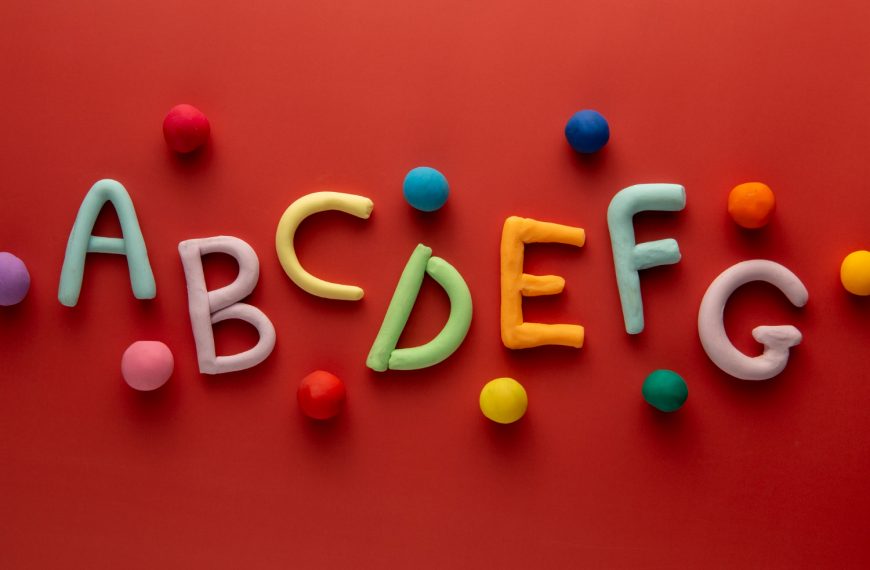What is an alphabet?
An alphabet is a collection of letters used to represent a consonant and a vowel in a language. The English alphabet, one of the most widely known, contains 26 letters.
We all remember singing our ABCD song at nursery school. It was the beginning of our educational journey. But did you know that the ABCD song is different when it is sung in different languages? Most written languages have an alphabet, but they all have different numbers of letters. So, how many letters do all the languages have in their alphabet? Read on to find out about the alphabet of 11 languages around the world and how many letters they contain.
Languages Around the World and the Number of Letters in their Alphabet
English Alphabet
There’s no denying that English is the universal language, and the alphabets are the same regardless of which version (American English, Britain English).
It has 26 letters that range from A to Z: A, B, C, D, E, F, G, H, I, J, K, L, M, N, O, P, Q, R, S, T, U, V, W, X, Y, Z.
Cool fact: Until 1835, the English language had 27 letters. The 27th letter after ‘Z’ was ‘&’ (ampersand).
Arabic Alphabet
There’s a sublime beauty in the Arabic written word that lies in the uniqueness in which it is written and read: right to the left, that is, instead of left to right.
Its alphabet has 28 letters that form a language traced back to the sixth century!
Did you know? – When traveling to an Arab country, you will find street signs without transliterations. Another reason to take a crash course in Arabic before you go!
Spanish Alphabet
Hola! The Spanish alphabet, like English, is a variation of Latin. So, it has the same 26 letters as the English alphabet does (a to z alphabet).
Did you know? – The 27 letters that comprise the Spanish alphabet combine to create about 30 different phonemes. Mind you, this number isn’t fixed on account of the ‘dialectical variation’, or in layman’s terms, ‘fluidity’, of the Spanish language. Trickier than it seems, this alphabet!
Swedish Alphabet
If you don’t quite agree with the popular adage ‘less is more’, the Swedish language, with a whopping 29 letters, might catch your fancy! Besides the extra vowels, the first 26 letters of the Swedish language match the English a-z alphabet.
Did you know? – Some alphabets feature ‘umlauts’ that resemble double dots (Å,å, Ů,ů). Now you know where you’ve seen that character!
French Alphabet
If Paris is the most romantic city in the world, French is the most romantic language. Just like English, it has 26 letters, but their pronunciation can be quite confusing.
Note: The ‘accent marks’ that lend the difference between the French and English written words are mere ‘modifiers’ and not additional letters.
Did you know? – The ‘cedilla’ that appears under the letter c (ç) when preceding a, o, or you indicate an ‘s’ sound.
German Alphabet
Even though the German alphabet is similar to its English counterpart in having the same number of letters, 26, it also contains 3 umlauts: ä, ö and ü.
Did you know? – The German language has an additional consonant: ß, called ‘Eszett’. Called a ‘ligature’, it is pronounced like the ‘s’ in ‘see’ and never stands at the beginning of a word.
Italian Alphabet
Like the Leaning Tower of Pisa, the Italian language (Alfabeto Italiano) comes with a twist. Using a variation of Latin, it has 21 letters that are not pronounced in the same way as in English. The missing letters in the Italian alphabet are J, K, W, X, and Y.
Like its English equivalent, the Italian alphabet has 5 vowels (a,e,i,o,u). Out of these, only ‘a’ represents one good value during each of the other two.
Did you know? – Even though the Italian language loves double consonants, you’ll rarely find a ‘double q’s, as in ‘squadron’, meaning ‘shambles’.
Chinese Alphabet
There’s just something about Chinese writing that is so aesthetically appealing! But would you believe it if you were told there was ‘no such thing as the Chinese alphabet’? Believe it or not, it’s true! The Chinese language is about characters that aren’t put together like letters to form a word because the characters are the words themselves!
Even though single characters’ do form words, sometimes two or three characters do the trick.
Did you know? – Unlike other languages, the Chinese language is written as a series of characters with ‘meanings’ and ‘sounds’.
Japanese Alphabet
If the Chinese alphabet threw you for a loop, you wouldn’t know what hit you with the Japanese. This language is an amalgamation of 3 writing systems: Hiragana, Katakana and Kanji.
Japanese children, when starting, learn Hiragana first.
Did you know? – Both Katakana and Hiragana are languages native to Japan, while Kanji was inherited from the Chinese ‘Hanzi’.
Korean Alphabet
Unlike its Japanese and Chinese counterparts, the Korean language is far simpler. While the former has thousands of characters that each have 10, 15, or more strokes, the most complex character in the Korean alphabet can be written using only five strokes.
The Korean alphabet has 14 consonants and 10 vowels. Also known as Hangul, it is one of the best languages for beginners, even those who don’t know Korean.
Did you know? – The Old Korean writing system was created using classical ‘Chinese’ characters! King Sejong, the inventor of Hangul, created it so Koreans could have a practical way of reading and writing.
Greek Alphabet
Do you ‘speak Greek’? Well, if you speak the Greek language fluently to a person who knows Greek, you do! This cool alphabet has 24 letters, but do you know what they are?
Alpha, beta, gamma, delta, epsilon, zeta, eta, theta, iopa, kappa, lambda, mu, nu, zi, omicron, pi, rho, sigma, tau, upsilon, phi, chi, psi, omega.
A no-brainer is that singing the ‘Greek song’ will be way harder than our cherished ‘ABCD’. One looks at the letters of the Greek alphabet, and a lot of them appear familiar. For instance, the letter pi (π) is the name and symbol for the popular mathematical constant.
Did you know? – When referring to something primary, we refer to the Greek letter ‘alpha’ (α), like in the phrase ‘alpha dog’. Greek letters find their places as names of fraternities and sororities, houses of ‘societies’ in American universities!
Final Thoughts On Languages, their Alphabets and Letters
English isn’t the only language out there, and this is something you need to ingrain in your children’s minds early on for them to gain an appreciation of other wonderful languages in the world and, subsequently, cultures. We believe and hope that this post was enriching for their budding minds!
For informative and accurate articles on all things related to your new born-toddler’s development, growth, health and nutrition, follow EuroKids Blogs and do check out our nationally recognized preschools – EuroKids for the first step in your kid’s educational journey!















